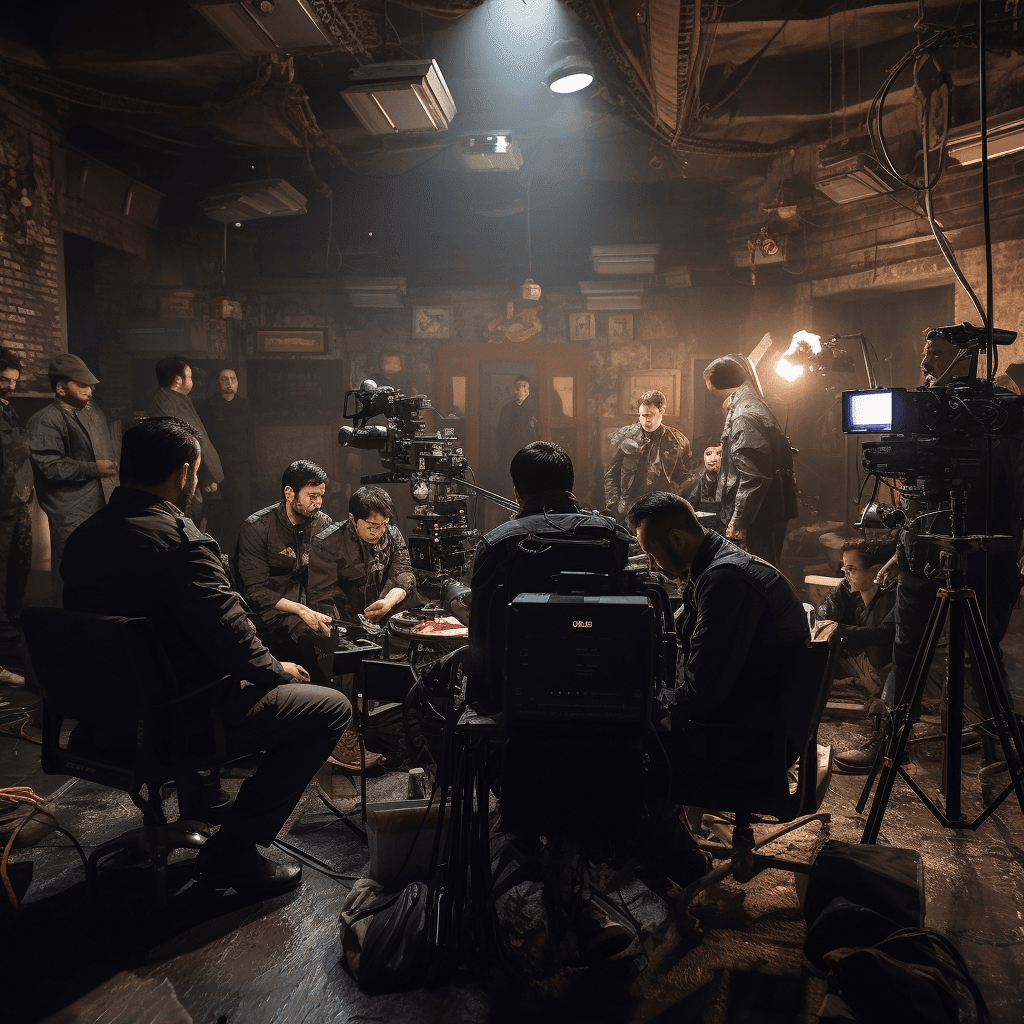What's After the Blog?
Cinema • Reboots
Analyzing the Art of Sequel and Franchise Filmmaking
Explore the intricate art of sequel and franchise filmmaking, uncovering the balance between innovation and continuity, and its impact on cinema's evolving narrative.
September 22, 2024

Analyzing the Art of Sequel and Franchise Filmmaking
Introduction
In the ever-expanding universe of cinema, sequels and franchises have become a dominant force, captivating audiences and reshaping the landscape of film production and distribution. The art of creating a successful sequel or developing a long-standing franchise involves much more than merely replicating the success of an original film. It demands a delicate balance of innovation and consistency, a deep understanding of audience expectations, and a strategic vision for long-term storytelling. The journey from standalone films like Jaws or Star Wars to expansive franchises like the Marvel Cinematic Universe (MCU) illustrates the evolution of this art form. These film series have not only achieved commercial success but have also influenced cultural trends and set new standards in filmmaking. As we delve into the intricacies of sequel and franchise filmmaking, platforms like What’s After the Movie (ATM) provide a valuable resource for tracking the progression of these cinematic phenomena.
The Evolution of Franchise Filmmaking
The concept of franchise filmmaking has evolved significantly over the decades. Initially, the idea of a sequel was often a direct response to the success of a film, intended to capitalize on its popularity with a similar, follow-up story. Early examples include classic Universal monster movies like Frankenstein and its sequel Bride of Frankenstein . However, as the industry matured, so did the approach to franchise development.
The introduction of the concept of a “cinematic universe” marked a pivotal change in franchise filmmaking. It transformed the way stories are told in cinema, allowing for a more interconnected narrative that spans multiple films and even different media formats. The MCU, with its intricate web of interrelated stories, characters, and events, exemplifies this approach. Each film, while a standalone story, contributes to a larger narrative arc, engaging audiences over years and even decades.
Similarly, franchises like Harry Potter and The Lord of the Rings demonstrated the potential of adapting expansive literary works into film series, maintaining narrative continuity and character development across multiple films. These franchises have not only been successful in terms of box office numbers but have also created immersive worlds that have engaged fans beyond the films, through merchandise, theme parks, and online communities.
The evolution of franchise filmmaking is also evident in the way these films are produced and marketed. With the rise of digital technology and social media, the promotion of film franchises has become an ongoing process, engaging audiences between film releases through teasers, behind-the-scenes content, and interactive fan experiences. The anticipation and buildup to sequels and new franchise installments have become a part of the storytelling experience itself.
In conclusion, the art of sequel and franchise filmmaking has come a long way from its early days of simple follow-ups to hit movies. Today, it encompasses a strategic, multi-faceted approach to storytelling that combines creative vision, audience engagement, and technological innovation. It’s a testament to the ever-evolving nature of cinema and its ability to adapt to changing audience tastes and market dynamics.
”What makes a film sequel successful?”
The success of a film sequel hinges on several key factors, each contributing to how well it resonates with audiences and carries forward the legacy of its predecessor. Firstly, a successful sequel must strike a delicate balance between originality and familiarity. It should offer a fresh narrative or perspective while maintaining the essence and core elements that made the original film appealing. For instance, The Dark Knight succeeded by not only retaining the gritty tone and complex character development of Batman Begins but also by introducing a compelling new antagonist in the Joker, thus elevating the franchise to new heights.
Another crucial aspect is character development. Sequels that effectively develop their characters in meaningful ways tend to resonate more with audiences. This is evident in franchises like Toy Story , where each sequel explores new facets of its characters, keeping the narrative fresh and emotionally engaging.
Additionally, maintaining continuity in terms of storytelling, style, and quality is essential. Sequels that appear disjointed or inconsistent with their predecessors often fail to capture the same magic. Consistency in the creative team, particularly directors and writers, can help in maintaining a coherent vision, as seen in the Harry Potter series, which, despite changes in directors, managed to keep a consistent feel throughout.
Lastly, successful sequels often expand upon the universe they are set in, exploring new themes, settings, and characters. This expansion can bring depth and richness to the film’s world, as seen in Star Wars: The Empire Strikes Back , which introduced new planets and characters while delving deeper into the mythology of the Force.
Balancing Originality and Continuity in Sequels
One of the greatest challenges in sequel filmmaking is balancing originality with continuity. Achieving this balance requires a deep understanding of what made the original film successful while finding new ways to innovate and evolve the story. A sequel should not feel like a mere rehash of its predecessor; rather, it should expand upon the original in creative and unexpected ways.
Filmmakers who succeed in this balancing act often do so by deepening the complexity of their characters and narrative. For instance, Mad Max: Fury Road was able to revitalize the Mad Max franchise by introducing new characters and a distinct visual style, while still retaining the core elements of a post-apocalyptic world and high-octane action that fans loved from the original films.
Another approach is to shift genres or tones between films in a series, offering a fresh take on the material. Aliens , for example, transitioned from the horror-centric original Alien to a more action-oriented sequel, effectively redefining the franchise while keeping true to its roots.
Moreover, respecting the continuity of the story and characters is crucial. Sequels that disregard the established lore or character arcs can alienate fans of the original film. Careful consideration of the narrative journey and emotional resonance of the characters ensures that a sequel feels like a natural progression rather than a forced extension.
In essence, the art of crafting a sequel involves a symphony of creativity and reverence for the original film. It’s about finding new stories to tell within a familiar world, expanding the universe while staying true to its spirit. This intricate dance of originality and continuity is what transforms a simple sequel into a cinematic triumph.
The Economics of Franchise Films
The economic landscape of franchise filmmaking is a complex and high-stakes domain, where the financial rewards can be immense, but so are the risks. The success of a franchise often hinges on its ability to not only recoup the substantial investment required for blockbuster production but also generate substantial profits through box office earnings, merchandising, and subsequent media sales. Franchises like the Marvel Cinematic Universe and Star Wars exemplify the enormous economic potential of well-executed franchise films, generating billions of dollars in revenue.
A key aspect of the economics of franchise films is the budget. Sequels and franchise installments often have larger budgets than the original film, given the heightened expectations and the need to scale up the production value. This increase in budget, while allowing for grander visuals and more ambitious storytelling, also raises the financial stakes. A franchise film not performing well at the box office can lead to significant losses, as was seen with films like Justice League .
Merchandising is another crucial revenue stream for franchise films. Successful franchises extend their reach beyond the cinema, creating a cultural impact that translates into revenue from merchandise sales. This includes toys, clothing, video games, and more, contributing significantly to the overall profitability of the franchise. The Harry Potter series, for instance, has seen a vast range of merchandise that has kept the franchise alive and lucrative years after the last film was released.
Furthermore, the marketing and promotion of franchise films are often extensive and costly, aiming to build hype and anticipation. The marketing campaigns of these films are strategic and multi-platform, involving trailers, social media, partnerships, and often elaborate premieres. The effectiveness of these campaigns is crucial in ensuring a strong box office opening, which is often indicative of the film’s overall financial success.
”How do franchises impact the creative process of filmmaking?”
Franchises significantly influence the creative process of filmmaking, often imposing a set of expectations and constraints that shape the direction of a film. In a franchise, the need for consistency in style, tone, and narrative across multiple installments can sometimes limit the creative freedom of filmmakers. Directors and writers working on franchise films have to navigate pre-established worlds and character arcs, ensuring that their creative vision aligns with the broader narrative of the series. This was evident in the Star Wars sequel trilogy, where each director brought their unique style to the films while adhering to the overarching storyline and themes of the franchise.
Moreover, the long-term planning involved in franchise filmmaking impacts the scriptwriting and production process. Plot points, character developments, and even visual elements are often planned out well in advance, requiring a collaborative and coordinated approach among the creative team. This is particularly true for cinematic universes like the MCU, where individual films are interconnected and contribute to a larger narrative.
Casting in franchises also plays a significant role in the creative process. Actors in franchise films often become synonymous with their characters, shaping audience expectations and the portrayal of the character in future installments. The casting decisions made in early films set a precedent for the series, influencing its direction and audience reception.
In conclusion, while franchises offer filmmakers the opportunity to work on a larger canvas and reach a wide audience, they also present unique challenges in terms of creative expression and storytelling. Balancing the demands of a franchise with individual creativity is a nuanced aspect of modern filmmaking, requiring a harmonious blend of artistic vision and strategic planning.
Audience Engagement and Franchise Longevity
The success and longevity of a film franchise are deeply rooted in its ability to engage and maintain an audience over time. Engaging a fanbase in a franchise involves creating a world that is immersive and characters that are compelling enough to keep viewers coming back for more. The Marvel Cinematic Universe (MCU) is a prime example of this, having built a loyal fanbase through a combination of charismatic characters, interconnected storylines, and a consistent release schedule that keeps audiences engaged.
Audience engagement in franchises is often cultivated through a variety of means. The use of cliffhangers or unresolved story arcs at the end of films, as seen in Avengers: Infinity War , creates anticipation for future installments. The development of complex characters that evolve over time, such as Tony Stark in the Iron Man series , allows audiences to form deeper connections with the characters and their journeys. Additionally, the creation of a larger, interconnected universe can offer a more immersive and expansive experience, as viewers explore different facets and stories within the same world.
Social media and fan communities also play a significant role in maintaining audience engagement. Online platforms allow fans to discuss theories, share content, and connect with other fans, creating a sense of community around a franchise. This engagement extends beyond the films themselves, with fan conventions, merchandise, and other forms of media contributing to the franchise’s cultural impact.
The Future of Sequel and Franchise Filmmaking
As we look towards the future, sequel and franchise filmmaking is poised to continue its evolution, adapting to new technologies, storytelling techniques, and audience expectations. The integration of streaming platforms, for example, is already changing the landscape of franchise films. Platforms like Netflix and Disney+ are expanding the possibilities for storytelling, allowing for the creation of series and films that are part of the same universe but can be consumed in a more flexible format.
The use of advanced technologies in filmmaking, such as virtual reality (VR) and augmented reality (AR), could offer new ways to immerse audiences in the worlds of these franchises. These technologies have the potential to create more interactive and engaging experiences, deepening the audience’s connection to the franchise.
Additionally, there is a growing trend towards more diverse and inclusive storytelling in franchise films. Audiences are seeking stories that reflect a wider range of experiences and perspectives, and franchises that respond to this call, such as the inclusion of more diverse characters in recent MCU films, are likely to resonate more with modern audiences.
In conclusion, the art of sequel and franchise filmmaking is constantly evolving, shaped by changes in technology, culture, and audience preferences. As filmmakers and studios navigate this landscape, they are challenged to innovate and adapt, creating film series that not only entertain but also endure in the ever-changing world of cinema.
Conclusion
The exploration of sequel and franchise filmmaking reveals a multifaceted and dynamic facet of the cinematic world. These films are not just continuations or expansions of a successful first installment; they represent an intricate tapestry of storytelling, audience engagement, and innovative filmmaking. The art of creating a successful sequel or building a lasting franchise requires a delicate balance of staying true to the original while introducing fresh elements, maintaining a consistent quality while evolving the narrative, and satisfying existing fans while attracting new audiences. As we have seen through various examples, from the evolution of the Star Wars saga to the expansive storytelling of the MCU, sequels and franchises hold a unique position in the film industry. They are testaments to the power of storytelling that transcends individual films and creates a lasting impact on both cinema and culture.
In the ever-changing landscape of film, the role of sequels and franchises will continue to be pivotal. With advancements in technology, shifts in audience preferences, and the increasing importance of global markets, filmmakers and studios will face new challenges and opportunities in developing these extended narratives. The continued success of these films will depend on their ability to innovate, captivate, and resonate with audiences around the world.
Explore More on What’s After the Movie (ATM)
For those captivated by the art of sequel and franchise filmmaking and eager to dive deeper into this fascinating aspect of cinema, What’s After the Movie (ATM) offers a wealth of resources. Whether you’re interested in tracking the development of ongoing franchises, exploring the intricacies of sequel production, or staying updated on the latest trends in the film industry, ATM is your go-to platform. Join us as we continue to explore the evolving narrative of cinema and the endless possibilities that sequels and franchises present in the art of filmmaking.
Continue reading

What's After the Movie?
Not sure whether to stay after the credits? Find out!
Check out our other apps:
Actors
Companies
Latest Movies
© 2025 What's After the Movie. All rights reserved.




